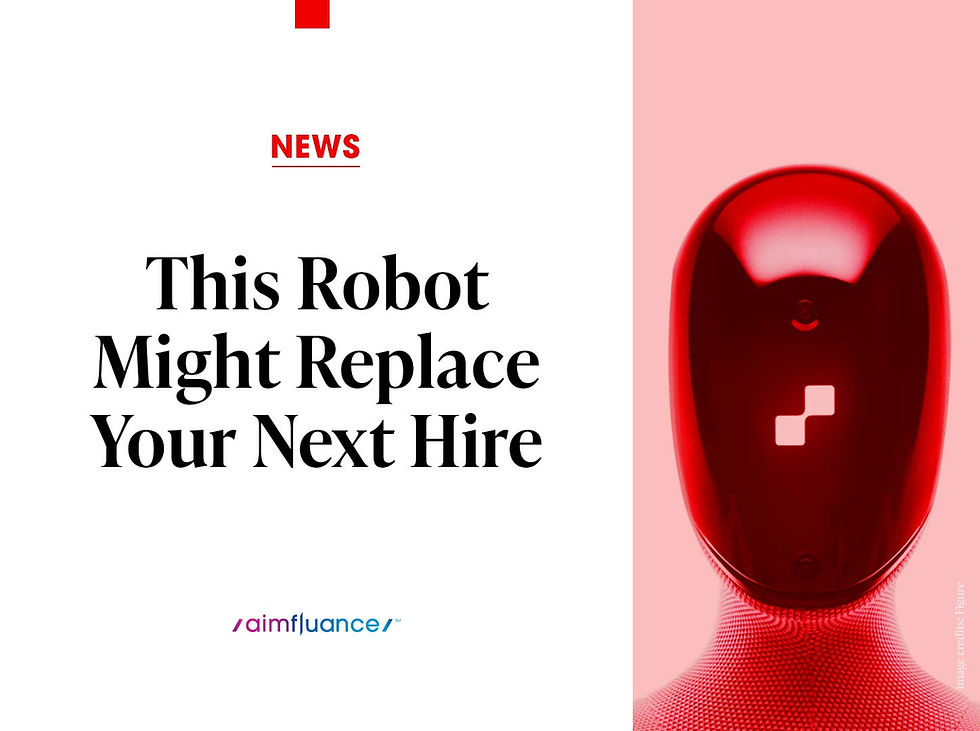The Hidden Toll of AI Infrastructure: $5.4 Billion in Public Health Costs and Rising
- Aimfluance LLC

- Feb 27
- 3 min read

The Rising Cost of Progress: Data Centers and Public Health
A landmark study by UC Riverside and Caltech reveals a stark reality: the rapid expansion of Big Tech’s data centers has resulted in $5.4 billion in public health costs over the past five years. Air pollution from these facilities, driven by fossil fuel reliance and surging AI infrastructure demands, is linked to increased cancer rates, asthma emergencies, and premature deaths.
Key Findings: A Crisis in Plain Sight
Underreported Emissions: Major tech companies underestimate fossil fuel usage by 30% or more, masking the true scale of emissions.
AI’s Dark Side: By 2030, AI-related air pollution could cause 1,300 annual U.S. deaths and $20B in health costs.
Environmental Injustice: Low-income communities in West Virginia, Ohio, and Northern Virginia bear disproportionate harm.
Cross-State Contamination: Emissions from Northern Virginia data centers drift into Maryland, Pennsylvania, and New Jersey, costing $260M/year in health impacts.
Deep Dive: Why Data Centers Are a Public Health Threat
1. Fossil Fuel Reliance Undermines Green Claims
Despite pledges to adopt renewables, data centers remain tethered to fossil fuels. They account for 1% of global energy-related emissions today, but energy demand is projected to hit 2,500TWh by 2030—equivalent to powering 250 million homes annually. To meet AI’s voracious needs, some companies are reviving coal plants or building gas facilities, directly contradicting net-zero commitments.
Case in Point:
A Northern Virginia data center hub, dubbed “Data Center Alley,” uses diesel generators emitting fine particulate matter (PM2.5) and nitrogen oxides (NOx). These pollutants are linked to cardiovascular disease, lung cancer, and developmental harm in children.
2. AI Expansion Magnifies Risks
The AI boom is accelerating demand:
Training a single AI model consumes more energy than 100 U.S. homes use in a year.
By 2030, AI infrastructure could triple emissions in hotspot regions, worsening health inequities.
Health Risks from AI-Driven Pollution:
Premature death (1,300/year projected by 2030)
15% rise in childhood asthma attacks near data centers
10–20% higher stroke risk in exposed communities
3. Geographic Inequity and Regulatory Gaps
Low-income areas lack political clout to resist data center placement. Meanwhile, lax reporting standards allow companies to obscure emissions. For example:
Backup generators often operate during “testing,” bypassing emission caps.
States like Ohio permit data centers to use coal power under “economic growth” exemptions.
Future Forecast: Trends and Solutions
Emerging Risks (2025–2035)
Health Costs Could 10x: If AI energy demand doubles, AI Infrastructure Public Health Costs could exceed $50 billion annually by 2035.
Litigation Wave: States impacted by cross-border pollution may sue tech firms under the Clean Air Act.
Investor Backlash: ESG funds could divest from companies ignoring community health.
Four Critical Trends to Watch
Stricter Emissions Reporting: Federal mandates may force transparency on fossil fuel use.
Microgrid Adoption: Solar/battery microgrids could cut generator reliance.
AI Efficiency Innovations: Chips requiring less energy (e.g., quantum computing) may ease demand.
Community-Led Resistance: Grassroots campaigns, like Maryland’s “Clean Data Initiative,” will pressure policymakers.
Balancing Innovation and Accountability
The $5.4 billion health cost milestone is a wake-up call. While AI and cloud computing drive economic growth, their human toll can no longer be outsourced to vulnerable communities. Big Tech must prioritize:
Transparent Energy Reporting
Accelerated Renewable Transitions
Health Impact Mitigation Funds
Regulators, investors, and consumers hold the power to demand change—before the next decade’s projected death toll becomes reality. As the Caltech study warns: Sustainability isn’t just about carbon neutrality; it’s about valuing human lives in the algorithm.


